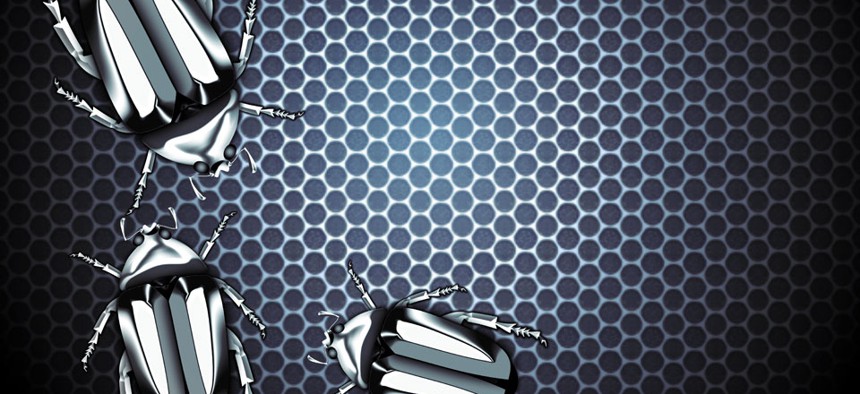How Cyborg Cockroaches Could Aid Disaster-Relief Efforts

mapichai/Shutterstock.com
Bugs backpacked with microphones could be deployed to disaster zones in the future.
Researchers at North Carolina State University say they've capitalized on the resilient nature of cockroaches by turning them into cyborgs that will assist in rescue and relief efforts by fitting in tiny spaces at disaster zones that current robots can't, and picking up sound with tiny microphones.
The cockroach cyborgs—called biobots—are equipped with tiny electronic backpacks that control the cockroach's movements. In one version, a single multi-directional microphone captures relatively high-resolution sound which is then transmitted wirelessly to first responders.
In the other version, multiple three-directional microphones detect the location of the sound to innately direct the biobot in that direction. "In a collapsed building, sound is the best way to find survivors," said Dr. Alper Bozkurt, an assistant professor of electrical and computer engineering at North Carolina State University and senior author of two papers on the work.
The idea of cyborg cockroaches aren't exactly new. Last year, PETA complained when one company sold the RoboRoach kit as a learning toy for $100, saying, "There is no way a child is going to learn anything about neurological diseases or be interested in studying it in the future based on mutilating a cockroach."
The next step for the search-and-rescue bugs is to refine and separate what sounds the microphones pick up and cause the biobot to react to them.
"The goal is to use the biobots with high-resolution microphones to differentiate between sounds that matter—like people calling for help—from sounds that don’t matter—like a leaking pipe," said Bozkurt. "Once we’ve identified sounds that matter, we can use the biobots equipped with microphone arrays to zero in on where those sounds are coming from."
(Image via mapichai/Shutterstock.com)





